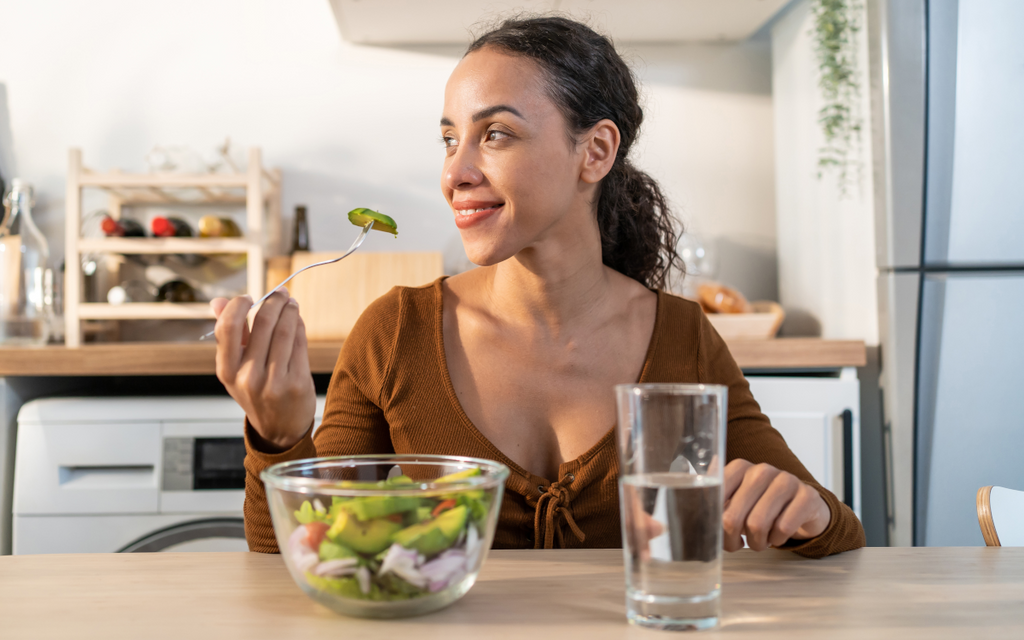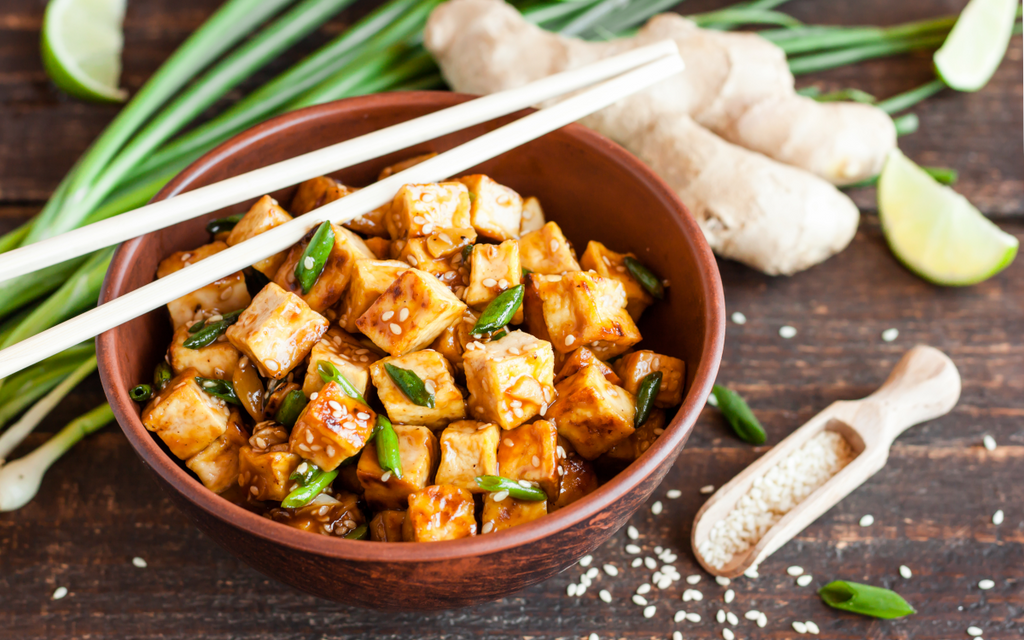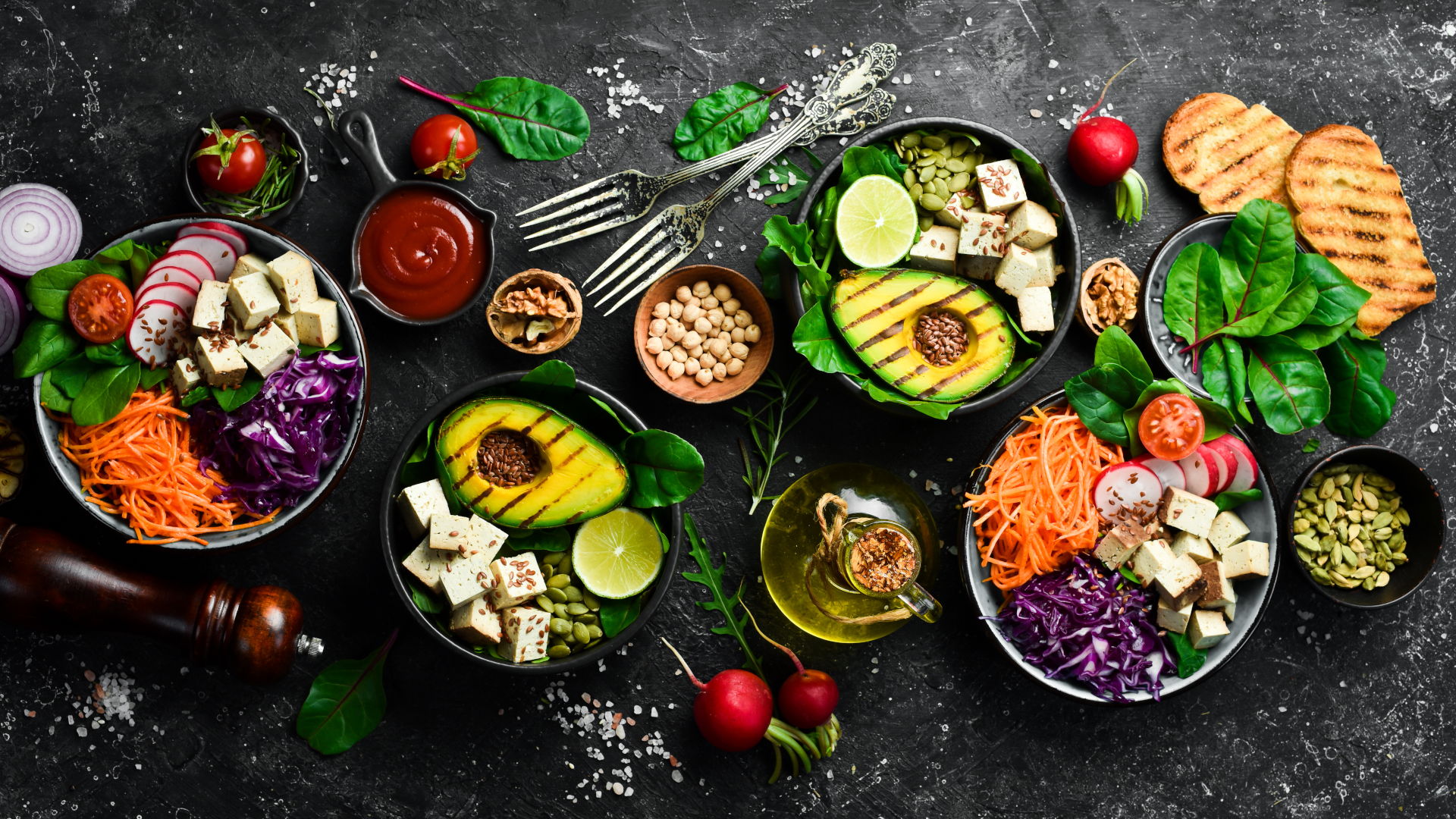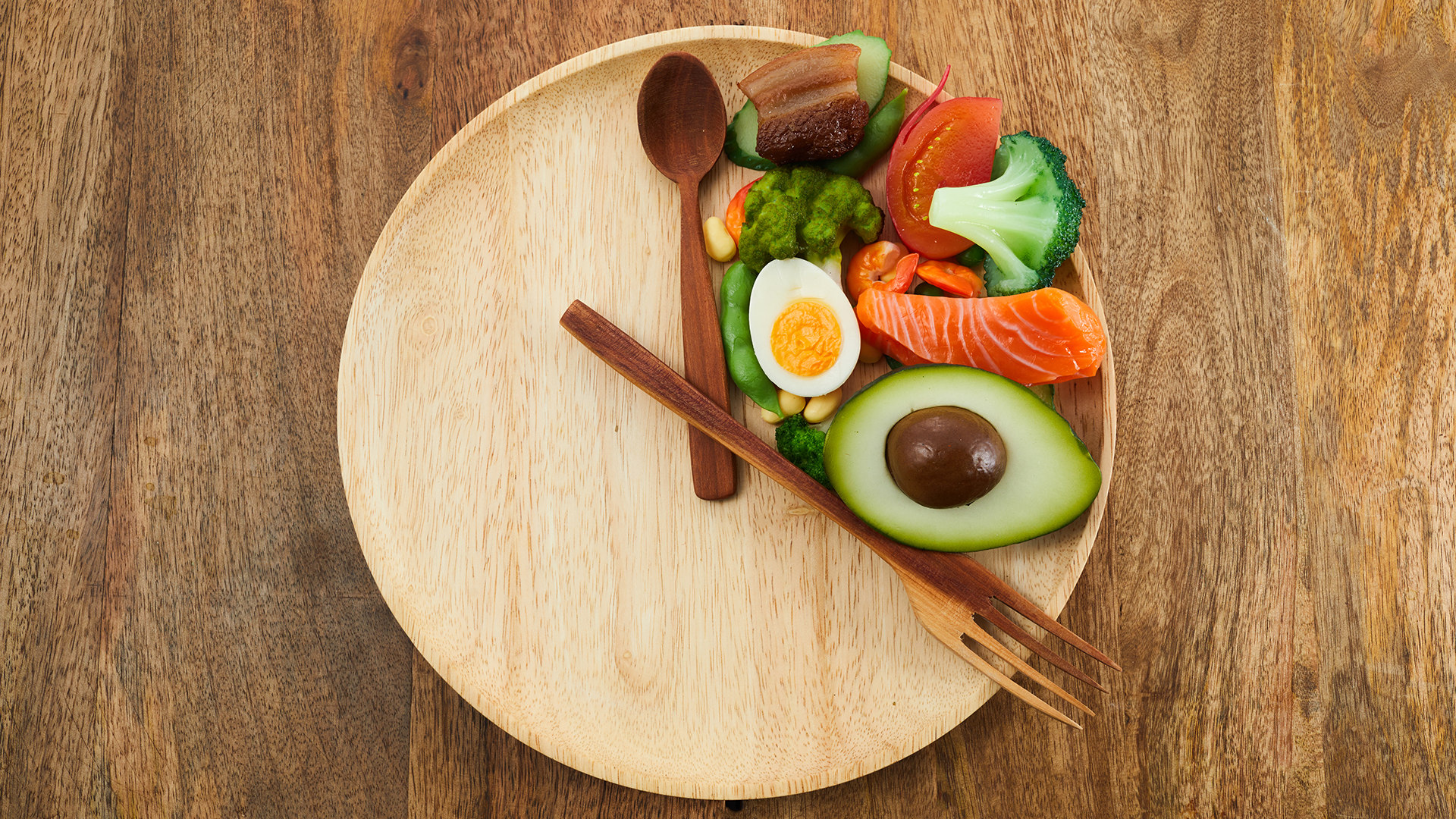Things you'll learn here... |
If you want to shed extra pounds and supercharge your fat loss, the first place to start is with your dinner plate.
It’s not just how much goes onto your plate, it’s also what goes on it.
Each meal should contain lots of vegetables, some healthy fats, complex carbs, and a lean source of protein. That’s the ideal combo, with the serving of each essential nutrient varying based on your body type and your goals.
Another thing to consider when filling up your plate to make your meals even better for weight loss is the types of protein you choose.
If you’re like most people, you probably go for meaty proteins like chicken or beef pretty regularly. Maybe some lamb or turkey to switch things up now and then. Or some sort of fish on occasion.
But how about vegetarian and vegan protein sources?
Adopting a plant-based diet can be a real game-changer when it comes to achieving your weight-loss goals.
There are plenty of tasty and healthy plant-based protein sources to pick from too— and we’re going to show you some of the best ones.
It doesn’t matter whether you already follow a vegetarian diet or you simply want to include more plant-based meals into your diet. Either way, you can fill up on plant power and bid goodbye to unwanted body fat.
High-protein vegetarian foods will not only keep you satisfied—they also provide you with plenty of energy to power you through the day.
Plant protein sources also provide a treasure trove of other wellness benefits. They’re usually low in saturated fat and cholesterol, making them heart-healthy choices. And they’re often high in dietary fiber to aid digestion and help you feel fuller for longer.
So, get ready to rev up your metabolism and watch the extra pounds melt away with the help of some delicious and nutritious high-protein veggie options. Yum.
The benefits of a plant-based diet for weight loss

There are lots of health benefits to a plant-based diet, including enhanced weight loss.
By focusing on eating mostly fruits, vegetables, whole grains, and plant-based proteins, you can reduce your calorie intake while still providing your body with the nutrients it needs.
One of the key benefits of getting more plant-based foods into your diet relates to their high fiber-content.
Fiber not only aids in digestion, it also keeps you feeling fuller for longer, which helps reduce the amount of calories you consume and prevents you from overeating.
It’s not just weight loss that is impacted either. Swapping out meat and animal products for more plant-based foods can improve your overall health and wellbeing.
Studies have shown that you can actually lower your risk of chronic diseases such as heart disease, diabetes, and certain types of cancer.
So, by adopting a plant-based diet, you'll not only be taking steps towards achieving your weight-loss goals—you’ll also improve your long-term health.
How vegetarian protein can help you lose weight?
As you’ll already be getting lots of fruits and vegetables into your diet (you are, aren’t you? Be honest…) you should already have that aspect of your nutrition covered. It’s the protein content that will likely need changing up.
You may think that meat is your only real option for protein, but that isn’t the case.
There are plenty of alternatives that can suit a vegetarian or vegan diet while fueling your fat-loss journey.
No matter the source, protein plays a crucial role in weight management. As the building block of our muscles, protein helps repair and rebuild muscle tissue after exercise.
Protein then helps preserve your lean muscle mass, which is important for maintaining a healthy metabolism and burning calories.
Protein also has a higher thermic effect than carbohydrates and fats. This means that your body has to burn more calories just to digest and process it.
And when it comes to fat loss, protein can help curb your appetite. So when you include protein-rich foods in your diet, you’ll stay fuller for longer.
In turn, this will reduce your cravings for unhealthy, calorie-dense foods—which, let’s face it—we can all be guilty of from time to time.
Another huge benefit to high-protein vegetarian foods is that they’re typically lower in calories and fat compared to animal protein, making them a great choice if you’re looking to shed some pounds.
Top vegetarian protein sources for fat loss

So, what are some of the best plant-based proteins? Here are some great options to include in your meal plan.
Pulses and legumes
Pulses like peas, beans, and lentils are excellent vegetarian protein sources that are also high in fiber, so adding some to your meals will really fill you up.
They can also help lower your cholesterol and blood pressure levels, giving you greater control over your blood sugar and excess body fat.
Lentils are one of the most protein dense on the list, as one cup (240ml) contains an impressive 18g of protein—nearly 50% of your daily requirement. They’re also a strong source of iron, contain slowly digested carbs, and provide 50% of your daily fiber intake. All of which is great for energy production and fat loss, and can help to reduce your risk of heart disease and diabetes.
Bean-wise, there’s kidney beans, pinto beans, black beans, baked beans, garbanzo beans (aka chickpeas)…the bean list goes on.
But all of them are high in protein (around 15g per 240ml, on average). They also contain a significant amount of minerals like folate, iron, magnesium, phosphorus, and potassium.
There are countless ways to get legumes and pulses into your diet. You can add them to salads, soups, or stews, or even use them as a base for vegetarian burgers or meatballs.
Grains and seeds
They might sound like the kind of foods you’d feed to birds or rabbits, but grains and seeds are a great source of vegetarian protein for us too.
Quinoa, for instance, is a complete protein (around 8g per 240 ml serving). that contains all nine essential amino acids. It’s also high in fiber, magnesium, iron and manganese.
Amaranth is another grain that deserves a spot on your plate. It’s a good source of protein that’s packed with antioxidants and minerals like calcium and potassium.
Chia seeds, flaxseeds, pumpkin seeds, sunflower seeds, and hemp seeds are also rich in protein and healthy fats.
These powerhouse grains and seeds can be incorporated into your diet in various ways.
Quinoa works great as a base for salads or as a substitute for rice. Amaranth can be cooked and enjoyed as a porridge or added to baked goods for an extra protein boost.
Oh, and grains and seeds make a great addition to smoothies, salads, oatmeal, or yogurt.
Tofu and tempeh

For vegetarian diets, tofu and tempeh are common sources of protein that can aid in fat loss.
Made from soybeans, tofu is a versatile ingredient that you can use in a variety of dishes. It’s low in calories and contains all nine essential amino acids, making it a complete protein. Just 100g of tofu gives you eight grams of protein.
Tempeh, on the other hand, is made from fermented soybeans and has a nutty flavor and firm texture. It also has a high protein content and is a good source of probiotics, which can support gut health and digestion.
Both tofu and tempeh can be marinated, grilled, stir-fried, or baked to add flavor and texture to your meals.
You can use these lip-smacking plant-powered protein sources as meat substitute in countless dishes, like stir-fries, curries, pasta, salads, tacos, and sandwiches, to name just a few.
Plant-based protein shakes
In addition to whole foods, plant-based protein shakes can be a convenient way to boost your protein intake and support fat loss.
They’re usually made from peas, rice, or hemp, instead of a dairy-based protein like whey.
But, just like whey protein powders, plant-based shakes are available in lots of different flavors and you can mix them with water, milk, oatmeal, or your favorite smoothie ingredients.
As a shake, they’re great as a convenient post-exercise recovery drink or as a meal replacement if you’re on the go.
Other vegetarian protein sources you should know about
Along with the plant proteins we've covered so far, there are lots of other ways to increase your protein intake without resorting to meat.
- Eggs: Quick, cheap, and easy to make. One egg provides around 7g of protein. They can be hard-boiled, soft-boiled, pouched, scrambled, fried, or made into an omelet.
- Oats: Half a cup of oats contain 6g of protein and 4g of fiber, and can be mixed with protein powder, fruits, and milk or water for a super-healthy breakfast.
- Dairy: 100g of cow’s milk contains 3g of protein, whilst 100g of cheddar cheese offers up 25g of protein and 100g of Greek yogurt provides 6g of protein. There are also non-dairy alternatives to milk, like almond, oat, hazelnut, or soy milk that provide plenty of protein and calcium.
- Nuts: Like the grains and seeds mentioned earlier, nuts also contain protein. Try a small handful of peanuts, almonds, cashews, or pistachios as a snack.
- Nutritional yeast: OK, this doesn’t sound particularly appealing, but it’s actually quite a tasty way to add protein to things like mashed potatoes, scrambled tofu, pasta, or popcorn. It has a cheesy flavor to it and provides 14g of protein and 7g of fiber per 28g of the stuff.
- Spelt and teff: Spelt is a type of wheat that contains gluten, while teff comes from annual grass and is gluten free. Both contain around 10 to 11g of protein per cup, and are great alternatives to wheat and rice.
- Spirulina: A form of blue-green algae, just 30ml of spirulina offers 8g of protein, along with 22% of your daily iron and thiamine intake.
- Fruit: Not the highest in protein on the list, but fruits like guava, avocadoes, jackfruit, pomegranate, apricots, blackberries, and bananas all provide around 1 to 2g per 100g.
- Vegetables: Plenty of veggies can provide a decent amount of protein. Broccoli, spinach, green peas, asparagus, artichokes, potatoes, sweet potatoes, and Brussels sprouts will all make a fabulous addition to your dinner plate.
How to get more veggie protein into your diet

Getting plenty of protein into your diet with these plant-based sources doesn’t have to be tricky.
Here are a few ways to up your intake without breaking a sweat.
Start your day with a protein-rich breakfast
- Top your oatmeal or cereal with a spoonful of peanut butter or a sprinkle of chia seeds.
- Make a tofu scramble with vegetables, spices, and a side of whole-grain toast.
- Blend fruits, vegetables, and a scoop of protein-rich Greek yogurt into a smoothie.
Pack your salads with plant proteins
- Add a variety of beans (like chickpeas, black beans, and kidney beans) to your salads.
- Sprinkle roasted chickpeas, sliced almonds, or hemp seeds over your greens.
- Toss in some cubed tofu, tempeh, or vegetarian chick'n strips for an added protein boost.
Power up your sandwiches and wraps
- Use hummus, avocado, or nut butter as spreads instead of mayo or cheese.
- Layer on sliced tofu, tempeh, or vegetarian deli slices for added protein.
- Add a handful of sprouts, spinach, or cucumber for extra nutrients.
Upgrade your pasta and grain dishes
- Instead of traditional pasta, try lentil or chickpea pasta as a protein-packed option.
- Mix cooked quinoa or bulgur wheat with roasted vegetables and beans for a hearty grain salad.
- Stir edamame, green peas, or diced tofu into your fried rice or stir-fry dishes.
Eat high-protein snacks

- Eat a handful of nuts, seeds, or trail mix between meals.
- Dip veggies or whole-grain crackers into homemade hummus or bean dip.
- Keep boiled eggs, Greek yogurt, or protein bars handy for quick and convenient snacks.
Remember, variety is the key to getting more plant-based proteins into your diet. Experiment with different recipes and combinations to find what works best for you.
We’ve got a few for you next to get you started.
Easy vegetarian protein recipes for fat loss
Lentil and vegetable curry
- Saute onions, garlic, and ginger in a pan.
- Add lentils, vegetable broth, and your favorite curry spices.
- Simmer until the lentils are cooked.
- Add a mix of vegetables such as cauliflower, carrots, and peas.
- Serve with brown rice or quinoa.
Chickpea and spinach salad
- Combine cooked chickpeas, fresh spinach, cherry tomatoes, cucumber, and red onion in a bowl.
- Dress with lemon juice, olive oil, and your choice of herbs and spices.
- Top with feta cheese or avocado for added flavor and healthy fats.
Quinoa and black bean burrito bowl
- Cook quinoa according to package instructions.
- In a bowl, combine cooked quinoa, black beans, corn, diced tomatoes, avocado, and cilantro.
- Dress with lime juice, olive oil, and a sprinkle of chili powder.
- Serve with a dollop of Greek yogurt or salsa.
Tofu stir-fry
- Marinate tofu in soy sauce, sesame oil, garlic, and ginger.
- Stir-fry tofu with your favorite vegetables such as bell peppers, broccoli, and snap peas.
- Serve with brown rice or noodles.
Protein smoothies
- Blend together a mix of your favorite fruits such as berries, banana, and mango with plant-based protein powder, almond or soy milk, and a handful of spinach or kale.
- Add a tablespoon of chia seeds or flaxseeds for an extra protein and fiber boost.
Bonus diet hacks to aid weight loss
Upping your plant protein intake is a smart way to control how many calories you eat and help you burn body fat.
But we’ve got a few more tricks up our sleeve for you to try too, for an extra boost to your weight-loss results.
Let’s take a look.
- Portion control: Use smaller plates and bowls to temper the amount of food you eat. You’ll consume fewer calories without feeling deprived.
- Drink plenty of water: Staying hydrated helps you feel fuller and prevents overeating. Aim to drink at least eight glasses of water per day.
- Plan and prepare meals in advance: Planning your meals ahead of time and prepping healthy snacks can help prevent impulsive food choices and overeating.
- Limit processed foods and added sugars: Processed foods tend to be high in calories and low in nutrients. Minimize your intake of sugary drinks, sweet treats, packaged snacks, and refined grains.
- Eat mindfully: Slow down and pay attention to your food while eating. Enjoy each bite and stop eating when you feel comfortably full.
- Get enough sleep: Lack of sleep can disrupt your hunger hormones and lead to overeating. Aim for seven to nine hours of quality sleep per night.
- Exercise regularly: Combining a healthy diet with a regular physical activity that you enjoy is key to weight loss and improving your overall health.
One final fat-burning tip…

If you’ve never followed a plant-based diet before then it can feel overwhelming to dive straight in at the deep end.
But hopefully the tips above can help you slowly but surely adjust to a more meat-free lifestyle to help you stay healthy and lose body weight.
One final tip we have for you that can enhance your fat-burning results even further is to take a daily supplement that boosts your metabolism and suppresses your appetite.
This is what PhenQ is all about.
It contains proven ingredients for increasing your fat-burning potential and for curbing food cravings.
Whether you follow a plant-based diet or not, PhenQ can kick your fat-burning into a higher gear and prevent overeating.
When combined with food choices and regular exercise, there’ll be no stopping you.




